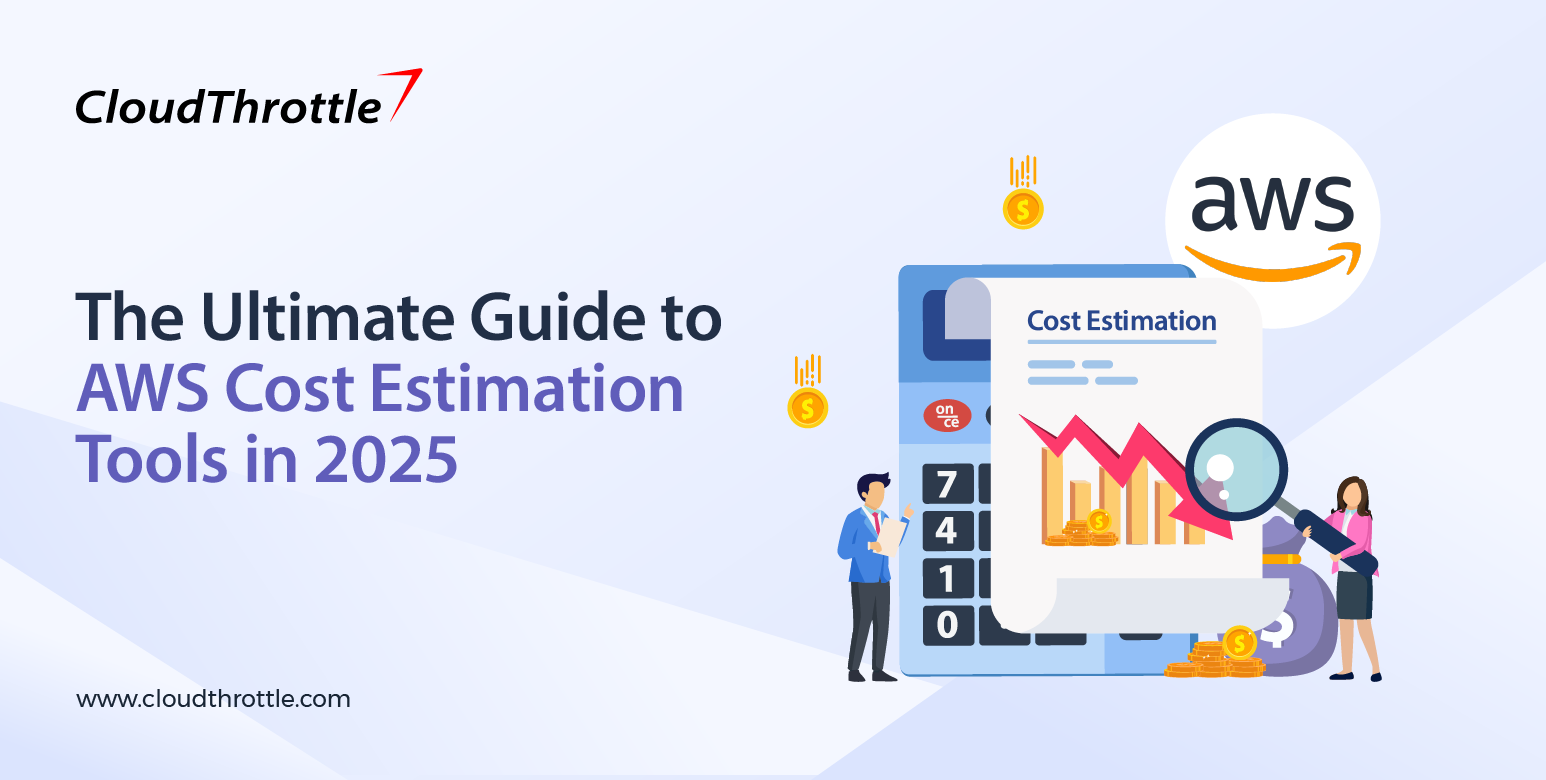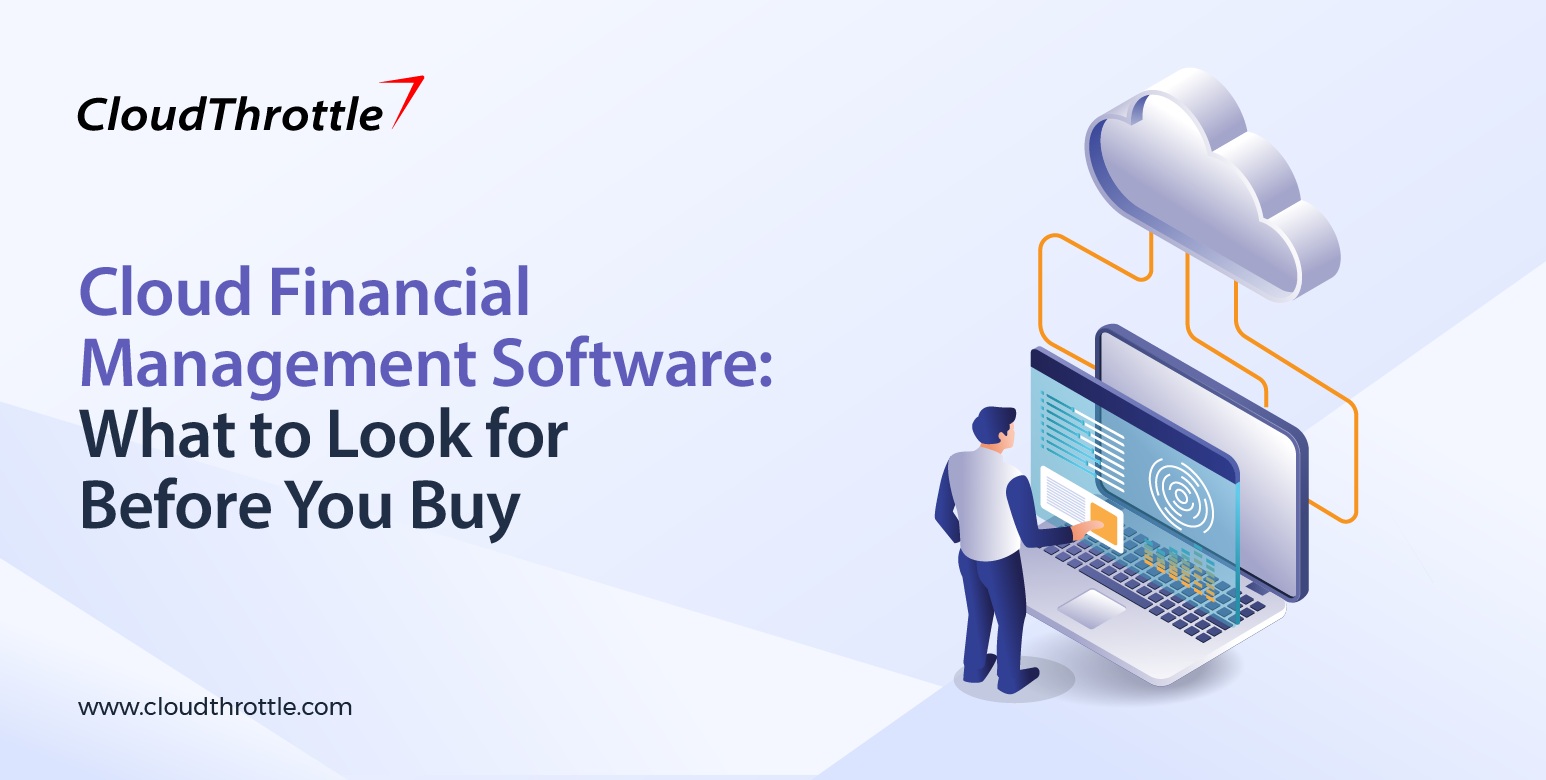Have you ever started an AWS project only to be surprised by a bill that seemed far higher than expected? You are not alone. Accurately predicting costs has become one of the biggest challenges for businesses using Amazon Web Services (AWS), especially as multi-account and multi-service cloud environments grow more complex.
AWS cost estimation tools play a critical role in identifying hidden charges and managing unpredictable expenses. They help address fluctuating data transfer fees and detect underused instances that silently increase overall spending. Right from the official AWS pricing calculator to advanced third-party solutions, cloud teams now depend on data-driven cost forecasting to balance performance and spending.
This guide explores the most effective AWS cost calculators and cloud cost estimation tools available in 2025. Learn more to comprehend how each supports smarter financial planning and stronger AWS cost management practices
What Are AWS Cost Estimation Tools?
AWS cost estimation tools are specialized platforms that calculate the expected cost of using Amazon Web Services based on resource configurations and usage patterns. They provide an accurate financial view before deployment. It helps teams plan budgets and control spending. These tools analyze technical parameters such as:
- Compute hours
- Storage capacity
- Data transfer volume
- Regional pricing to create cost projections that streamline with real-world workloads.
Key metrics such as instance runtime, data transfer bandwidth, I/O requests, and storage tier selection determine total cost in AWS cost analysis. AWS cost estimation tools bridge the gap between engineering performance and budget control by integrating technical insights with financial reporting.
Top AWS Cost Estimation Tools in 2025
Following AWS cost estimation tools support engineers and finance teams in forecasting expenses and streamlining budgets with usage patterns:
1. CloudThrottle
CloudThrottle is designed to give organizations complete control over their AWS spending through precise forecasting and automation. It focuses on cloud cost optimization, where team discipline, accountability, and governance play a crucial role. It applies advanced budget workflows such as proration, rollover, and multi-level triggers to maintain predictable cloud spending. It tracks every active resource in real time and connects directly with AWS billing data to produce accurate cost predictions.
2. AWS Pricing Calculator
The AWS Pricing Calculator provides a detailed estimate of cloud expenses before deployment. It permits users to configure services such as EC2, S3, RDS, and Lambda while applying parameters like instance type and storage volume. The tool calculates total cost by factoring in compute hours and reserved instance discounts. Updated for 2025, it includes performance-based recommendations that align configuration options with expected workloads.
3. AWS Cost Explorer
AWS Cost Explorer supports continuous monitoring and post-deployment cost validation. It tracks historical data and compares projected estimates with actual consumption. Its filtering capabilities based on tags and linked accounts improve visibility and ensure consistency in AWS cost management.
4. AWS Budgets and Cost Anomaly Detection
AWS budgets integrate estimation with real-time cost control. Teams define budget limits for services or projects. And, the system alerts users when forecasts deviate from planned spending. Cost anomaly detection applies machine learning to identify unusual cost behavior. It helps prevent unexpected spikes. Together, these tools combine predictive and reactive cost control for complete financial accuracy.
5. nOps
nOps provides machine learning–based cost forecasting that analyzes historical trends and predicts future usage. It integrates directly with AWS accounts to simulate workload costs under various configurations. The platform recommends reserved instance or savings plan adjustments based on usage data. Eventually, it upgrades both accuracy and efficiency in AWS cost estimation.
6. Apptio Cloudability
Apptio Cloudability concentrates on enterprise-level cost estimation and optimization. It consolidates multi-account AWS usage and applies pricing models. It produces financial reports tailored for executive and FinOps teams. The platform’s predictive analytics and budgeting modules ensure alignment between infrastructure planning and financial targets.
7. CloudZero
CloudZero connects cost analysis to product, feature, or team activity. It converts technical usage data into financial context, which helps decision-makers understand how engineering choices influence expenses. CloudZero’s continuous tracking enables fine-grained estimation that reflects real application behavior.
8. ProsperOps
ProsperOps automates AWS Savings Plan and Reserved Instance management. It forecasts commitment-based pricing benefits and continuously adjusts configurations to capture maximum discounts.
9. Spot by NetApp (formerly Spot.io)
Spot by NetApp focuses on workload optimization through automation. It predicts costs for dynamic cloud workloads and provisions resources automatically based on demand. Its estimations factor in usage spikes and scaling events, providing accuracy for variable workloads.
10. Densify
Densify uses analytics and resource behavior modeling to refine AWS cost forecasts. The tool integrates cost recommendations directly into DevOps workflows, which augments both efficiency and accuracy.
11. CloudHealth by VMware
CloudHealth offers governance-driven cost estimation and reporting. It consolidates AWS spending data with financial policies to produce detailed forecasts and compliance insights. Its strong policy management and reporting features make it suitable for organizations managing large-scale or multi-cloud infrastructures.
Comparison Table: Top AWS Cost Estimation Tools in 2025
Disclaimer: For informational purposes only, based on publicly available information at the time of publication. Pricing, features, and capabilities may change; verify with vendors. No endorsement or warranties implied.
Key Features to Look for in an AWS Pricing Estimation Tool
Selecting an effective AWS pricing estimation tool requires evaluating how well it connects technical performance with financial precision. The following features define a dependable and technically strong cost estimation framework:
- Real-Time Data Synchronization
A powerful estimator maintains a live connection with AWS billing and usage data. Continuous synchronization keeps forecasts aligned with real consumption. The best tools also allow drilldown into cause and incident analyses, so when a budget warning or critical alert appears, teams can click through to investigate which service or region caused the spike compared to previous months.
- Savings Plan and Reserved Instance Support
Estimators should calculate projected savings from Reserved Instances and Savings Plans. These pricing models reduce long-term expenses and help stabilize recurring workloads. An estimator that includes this function gives teams clear visibility into future commitments and return on investment.
- Cross-Account and Multi-Cloud Visibility
A unified view across AWS accounts improves governance and transparency. It simplifies cost reporting for organizations that operate in multiple environments. Consolidated visibility supports accurate forecasting and centralized management.
- Scenario Simulation for Forecasting
Advanced tools simulate different workloads and configurations before deployment. These simulations reveal how cost changes under various resource allocations.
- Automated Alerts and Reporting
Automation supports continuous monitoring of estimated versus actual spending. Alerts trigger when costs exceed set thresholds, while periodic reports provide actionable insights for engineers and financial teams.
- Tag-Based Allocation
Organized tagging links each cost to its respective department or project. This structure ensures accountability and supports traceability across all AWS resources. Proper tagging also improves precision in future budget estimations.
An AWS cost calculator that applies these principles delivers precise forecasting and technical control suited for complex and high-demand cloud environments.
Best Practices for AWS Cost Estimation and Budget Control
Following practices help teams plan smarter and spend with purpose:
- Build a Clear Tagging System: Every resource should have a clear identity. A simple tagging structure that links each instance or service to its project keeps spending visible and easy to trace. When ownership is defined, accountability follows naturally.
- Check Estimates Against Reality: Forecasts only work when they match real usage. Comparing expected costs with the monthly bill highlights where assumptions go off track.
- Estimate Before You Deploy: Cost estimation should be part of the setup process, not an afterthought. Reviewing projected expenses before deployment helps teams plan configurations that perform well without stretching budgets. This habit prevents surprise costs later.
- Watch Spending in Real Time: Cloud costs shift quickly. Continuous monitoring gives an early view of unusual activity and helps prevent budget overruns. Keeping an eye on usage patterns turns cost control into a steady habit rather than a last-minute task.
- Adjust Resources Regularly: Some instances grow idle, and others run larger than needed. Reviewing workloads and resizing them to actual demand saves money without lowering performance. Regular adjustments keep operations efficient and costs balanced.
- Review Forecasts Often: Cloud pricing and workloads change over time. Revisiting forecasts guarantees they stay accurate and relevant. A regular review helps maintain trust in financial planning and supports long-term stability.
Common Mistakes to Avoid in AWS Cost Estimation
Avoiding following mistakes helps maintain accuracy and prevents budgets from slipping out of control:
- Overlooking Data Transfer Costs: Data transfer between regions or services often becomes a hidden expense. Many teams estimate compute and storage accurately but forget to factor in network usage. Reviewing data flow patterns keeps these charges visible and manageable.
- Skipping Validation After Deployment: Estimation is only the first step. Failing to compare predictions with actual bills prevents teams from learning where projections went wrong. Regular validation strengthens accuracy for future estimates.
- Using Generic Instance Configurations: Default instance types rarely match real workload requirements. Estimating costs without reviewing CPU, memory, and I/O usage leads to inflated spending. Tailoring configurations ensures projections reflect true operational needs.
- Neglecting Automation and Alerts: Manual tracking increases the risk of missing cost spikes. Automated alerts and reporting systems identify unusual patterns quickly. Implementing these tools keeps financial control consistent and proactive.
- Disregarding Regional Pricing Variations: AWS pricing differs across regions, and estimates based on one location may not apply elsewhere. Selecting the correct region for each service ensures realistic projections and avoids unexpected billing differences.
Conclusion
Effective AWS cost estimation has become a vital part of managing cloud infrastructure. It connects financial accuracy with technical performance and helps teams plan confidently and avoid unnecessary waste. Tools and practices now available in 2025 make it possible to predict spending with precision and maintain steady budget control across complex environments. Solutions that combine proactive workflows, multi-level thresholds, and drilldown analysis deliver stronger accountability and financial visibility across all AWS accounts.
Are you all set to take control of your AWS costs with precision and confidence? Try CloudThrottle today to experience automated cost tracking. Start optimizing your cloud budget before your next billing cycle begins.
Note: Information reflects publicly available sources at the time of publication and may change









![Top 5 Cloud-Based Spend Management Tools Compared [2025 Edition]](https://cdn.prod.website-files.com/64731606d2cec19ff3da0700/6904613678cbff309a09ef89_Top%205%20Cloud-Based%20Spend%20Management%20Tools%20Compared.png)






